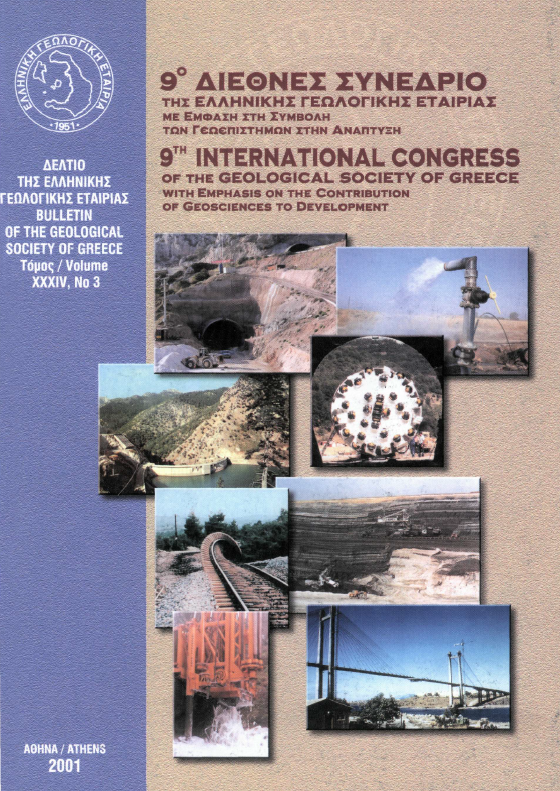The location of Ti, REE, Th, U, Au deposits in the seafront zone of Nea Peramos - Loutra Eleftheron area, Kavala (N. Greece) using γ radiation

Abstract
The radiometric study allowed the survey of γ-radiation, pinpointed the areas of highest or irregular radiation values, and finally acquired a very important drawing specifying the geochemistry of U, Th, Ti, REE, Au
etc.
In today's shoreside zone, very high surficial levels of U with an average value of 22 and highest of 92 ppm were found, while in the sublittoral old zone all the g-radiation values found were irregular and much higher of those of the radiometric background, of the all-round subaqueous environment (mean values of residual sands 250 and 305 opposite to <60 (c/s)/grxl04 for the "background". The enrichment of sand with trace elements of U is a result of today's and mainly older wave-action, in the lower parts of sandy shoreside formations, with an expected highest enrichment in the bedrock cavities. Initial samples of sands enriched with U elements up to 50 ppm are considered to be a naturally grated multimetal mineral of Ti, U-Th, REE, Au and other metals for high-value technological applications.
The concentrations of the above metals are higher of those internationally known to similar minerals(2.5%, 50-1600 ppm, 11.000 ppm and 250 mg/m3 respectively) and can be multiplied with lightwatermetallurgical processes. The concentrations of sands with highγ-radiation in today's shoreside zone can be differentiated between fine, medium and thick grains of sand particles with a slight inclination towards the waveaction. Their thickness has characteristic fluctuations, with a growth tendency up to a depth of 1.5 m and a decreasing tendency for depths under 2 m.
On an horizontal region these concentrations values appear to grow continuously from the periphery towards the center and the γ-radiation values of the periphery seem to grow with the remotion of the present sediments. The γ-radiation in the sublittoral zone present a recurrent enrichment in the lower parts of the formations and is covered in the deepest points from the surface of the sea from younger age sediments.
In the present sublittoral zone as well as in the shoreside zone, lower layers of sands formed out of natural grate actions, are mainly the medium grain and secondarily the fine grain variety. These natural enrichments due to waveaction, form selective concentrations of less important minerals U-Th, allanite rich in U02 and uraninite low in Th02 , which are responsible for the γ-radiation rise.
Article Details
- How to Cite
-
ΠΕΡΓΑΜΑΛΗΣ Φ., ΚΑΡΑΓΕΩΡΓΙΟΥ Δ. Ε., & ΚΟΥΚΟΥΛΗΣ Α. (2001). The location of Ti, REE, Th, U, Au deposits in the seafront zone of Nea Peramos - Loutra Eleftheron area, Kavala (N. Greece) using γ radiation. Bulletin of the Geological Society of Greece, 34(3), 1023–1029. https://doi.org/10.12681/bgsg.17707
- Section
- Geochemistry and Ore Deposit Geology

This work is licensed under a Creative Commons Attribution-NonCommercial 4.0 International License.
Authors who publish with this journal agree to the following terms:
Authors retain copyright and grant the journal right of first publication with the work simultaneously licensed under a Creative Commons Attribution Non-Commercial License that allows others to share the work with an acknowledgement of the work's authorship and initial publication in this journal.
Authors are able to enter into separate, additional contractual arrangements for the non-exclusive distribution of the journal's published version of the work (e.g. post it to an institutional repository or publish it in a book), with an acknowledgement of its initial publication in this journal. Authors are permitted and encouraged to post their work online (preferably in institutional repositories or on their website) prior to and during the submission process, as it can lead to productive exchanges, as well as earlier and greater citation of published work.


